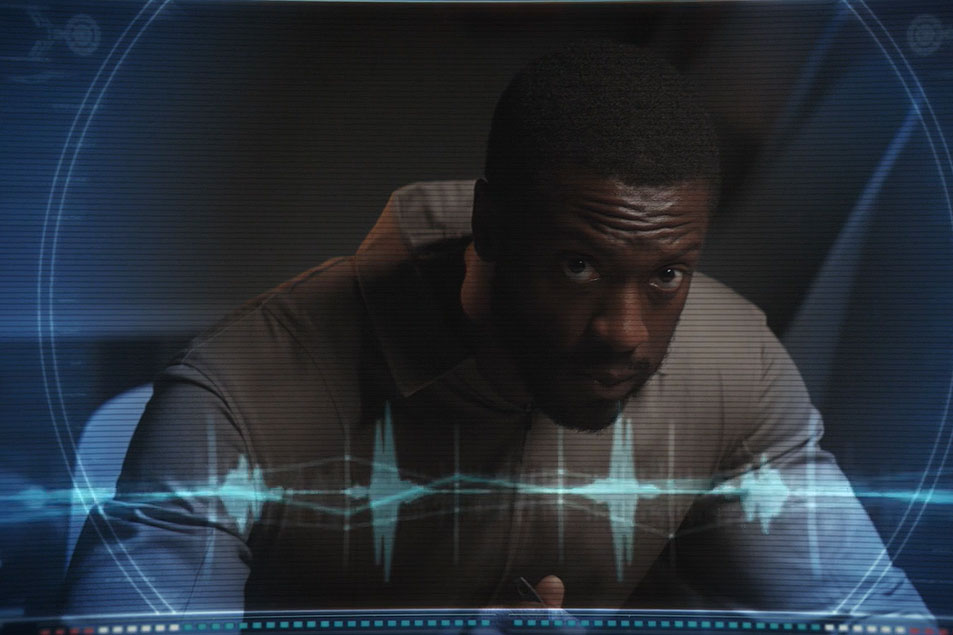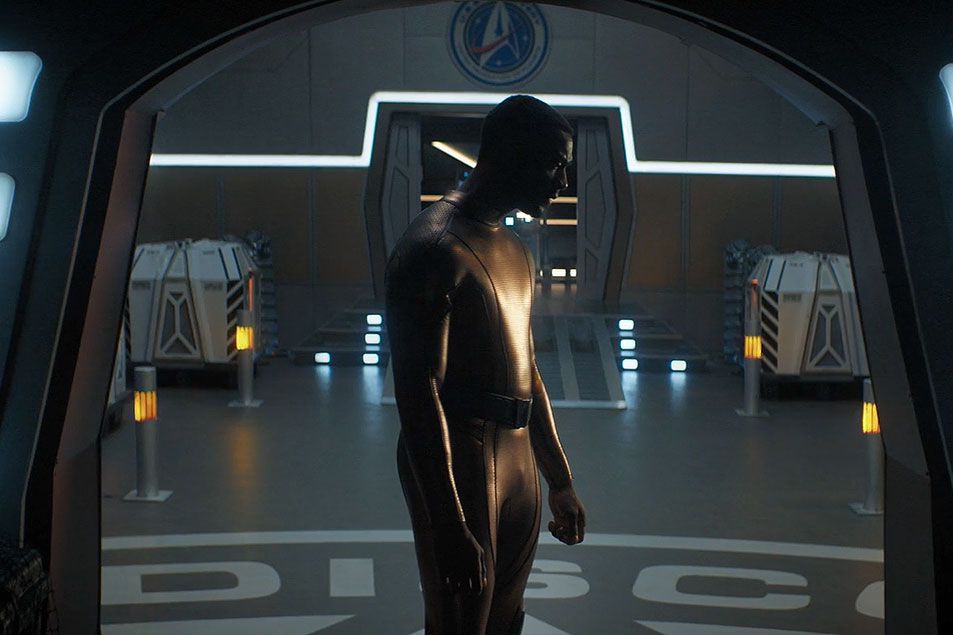Based loosely upon the Greek myth of the same name, as told in Homer’s The Odyssey, the second Star Trek: Discovery Short Trek outing “Calypso” is a radical departure from a traditional Star Trek episode.
This is a high concept 18 minutes of Star Trek, in which a man named Craft (guest star Aldis Hodge) is rescued in an escape pod by an unmanned USS Discovery 1,000 years in the future, where he befriends and almost falls in love with the ship’s almost-human artificial intelligence program who has named herself Zora (voiced by Annabelle Wallis), and then ultimately returns to his family.
This episode, written by Pulitzer Prize-winning author Michael Chabon from a story by Chabon and Sean Cochran, is like a visual short story. Many of the details, and much of the context is stripped away to efficiently tell a story of the relationship between one man and one machine. How did the USS Discovery find itself abandoned by its crew, and then left to gather dust for a thousand years? What has happened to the Federation? None of these questions are answered — and honestly, I don’t mind a bit.

As I reflected upon the conversation that took place online following the release of the last Short Trek, “Runaway,” much of the discussion became hung up on a perceived lack of context. Where was Po transported to? Why didn’t Tilly report her presence to the bridge crew? But where a novel is designed to help immerse you into a rich story that provides deep and meaningful context, short stories are designed to ruthlessly and efficiently look at something very specific.
Both “Runaway” and “Calypso” had a clear focus – the relationship between two individuals (or one man and one AI, in the case of “Calypso”). Those are the important facets of the story, and while it might make me uncomfortable as someone who is used to getting all the answers that a 42-minute episode of television might afford not to get all of that context I am used to, it is a different storytelling format and style, that requires a different approach to judge.
That became much clearer to me when thinking about “Calypso” than it did “Runaway,” which seemed much more like the B-plot of a full episode stripped of the A-plot. “Calypso” resolutely stands alone and expresses no interest in providing you with any answers to understand where the story fits into Star Trek canon. It just exists, and it dares you to put aside many of your preconceived notions about what Star Trek is, and experience something that it could be.

Is that successful, and do people like what they see? I am sure that opinions will vary significantly on that. But you cannot deny that “Calypso” is quite a break from a standard Star Trek episode. Ultimately, I applaud the confidence of Star Trek’s showrunners in trying something new and different, because through trying new things Star Trek will find the right way to continue to grow and remain relevant to an ever-changing audience.
While the setting may be both familiar and unfamiliar, the characters new, and the episode almost entirely devoid of any references to previous Star Trek canon, at the heart of the episode is a concept that the franchise has grappled with multiple times: can machines be people? Craft, through his isolation on the Discovery and because the ship’s computer is the only individual he can interact with, faces this head on. Ultimately, it’s unclear what he decides – Zora concludes he cannot love her, and so helps him return home.
The performances in this episode by Aldis Hodge and Annabelle Wallis are phenomenal – particularly Wallis’ moving depiction of the disembodied Zora as she grows to realize that Craft may be incapable of loving her fully. The direction by Olatunde Osunsanmi is also excellent; the far future elements, which make even the dusty sets of the Discovery feel totally unfamiliar, mixed with the anachronisms of a Betty Boop cartoon and the 1957 movie Funny Faces, create an ethereal mood to the production that made me feel both at home and in a strange place all at the same time.

(Unfortunately, viewers outside the US and Canada still do not have access to Short Treks. On that point, I’ll say the same thing I said after the release of “Runaway”: fix it!)
“Calypso” is different and daring, and as a result is probably not going to be for every fan. But the franchise should be applauded for trying new things, and also for landing such a talent as Michael Chabon. Chabon brought a novelist’s perspective to telling this story, and if Short Treks can’t be used to try something different, when will Star Trek ever evolve like the Discovery AI?
Luckily for us, we know that Chabon is a member of the writers room on the Picard show, and so this will not be his only entry into the Star Trek legacy. In the meantime, Star Trek: Discovery returns in another month with the Saru-centric “The Brightest Star,” set to beam down to CBS All Access and Space on December 6.
